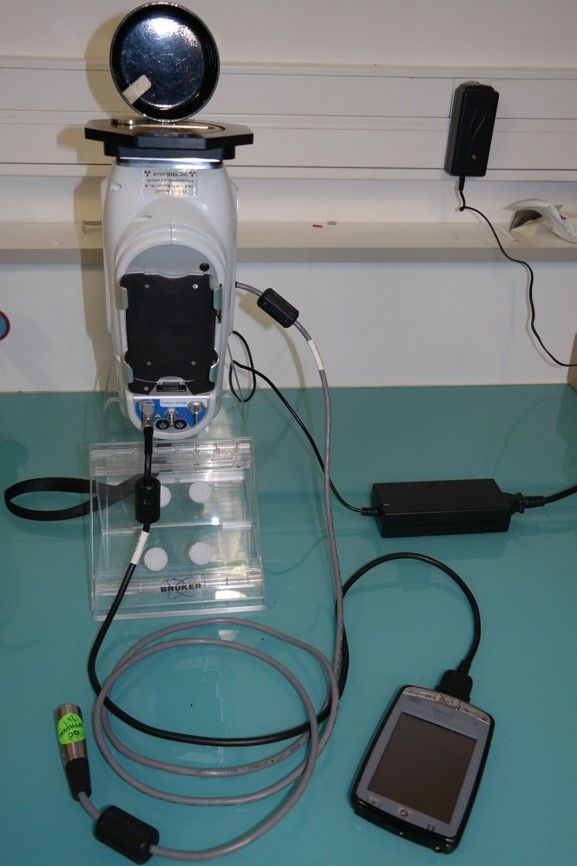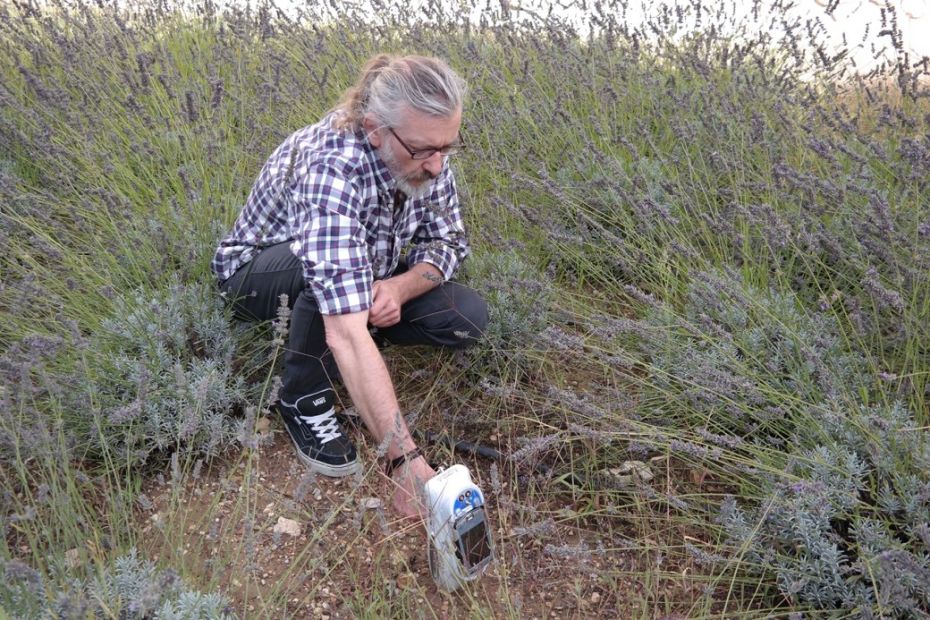The project "Chemical calibration in ceramology: use of portable X-ray fluorescence (pXRF)" (C3X) has been funded by the Institute of Mediterranean Archaeology ARKAIA in the framework of the "Amorce" 2020 call for projects (end of activities: December 2021). It is co-financed by the Cerege laboratory.
The vast majority of the material uncovered during excavations is ceramic, but it is often difficult to assign a definite origin to a ceramic, except in the relatively rare cases where the production workshops are known. Faced with these uncertainties, archaeologists often ask for the help of archaeometers, which allow them to go beyond their visual observations. In recent years, archaeologists have turned to portable X-ray fluorescence spectrometers (pXRF) that are widely used in the field by geologists. These light and reliable instruments can be used for different applications such as geochemistry on rocks, soils, metals and alloys, ... etc, as well as glass (under helium), but also for the chemical characterization of ceramics. For the archaeologist (archaeometer), they have many advantages: (i) they are transportable to the archaeological mission site or to museums, (ii) they allow the characterization of large archaeological objects, (iii) they have a more accessible cost than laboratory XRF equipment and (iv) they are easy to use. With the development of the use of pXRFs, a debate quickly arose in the archaeometric community about their reliability compared to fixed laboratory XRF spectrometers. This debate led to the implementation of standardization and calibration protocols in order to avoid that each user develops particular practices, making his results incomparable with laboratories equipped with similar devices.
In this context, the C3X project aims to produce 10 chemical calibration kits for ceramics of various origins measured by portable X-ray fluorescence spectrometry (pXRF). Each of these kits will include 15 ceramics in the form of fusion discs (beads), accompanied by the corresponding analytical results and statistics. These results will be obtained by the recognized conventional methods (ICP-MS & OES, laboratory XRF) and in pXRF. Each user of the kit will then be able to refer to these values to inter-calibrate his own instrument, so that the results obtained in the various partner laboratories of the network will be comparable. The kits will be accompanied by a guide describing the protocols used and the ceramics selected. C3X will also enable the development of educational documents for archaeologists and archaeometers, particularly in the context of the Ceramopole and the A*Midex TRIADS project. This project is rooted in the pXRF user network (IRN-CNRS pXRFCUN project) validated by the CNRS in December 2020.
Funded by the Institute of Mediterranean Archaeology ARKAIA - A*Midex Foundation, the "Amorce"scheme supports with a budget of €5000 to €10,000 the emergence of new research and approaches prefiguring the structuring of networks of partners in order to respond to national or international calls for high-level projects. Consult the list of funded projects.
Coordination
Jean-Paul Ambrosi (CNRS - Cerege)
Daniel Borschneck (CNRS - Cerege)
Michel Bonifay (CNRS - CCJ)
Véronique François (CNRS - LA3M)




